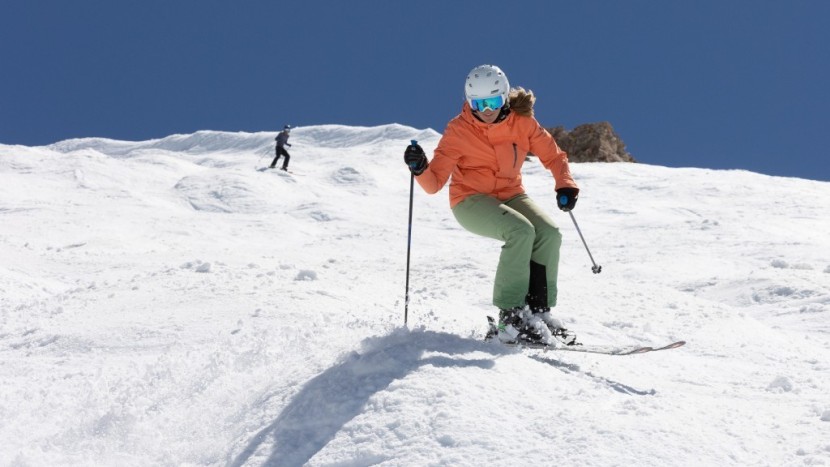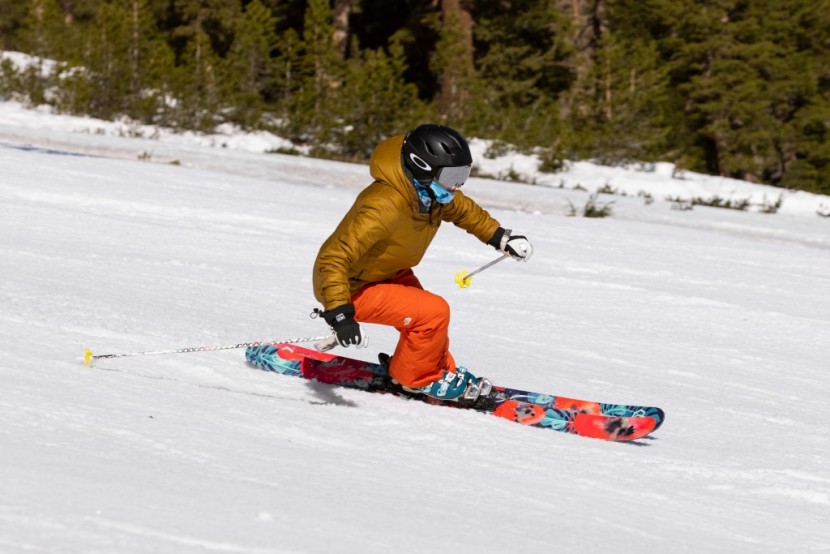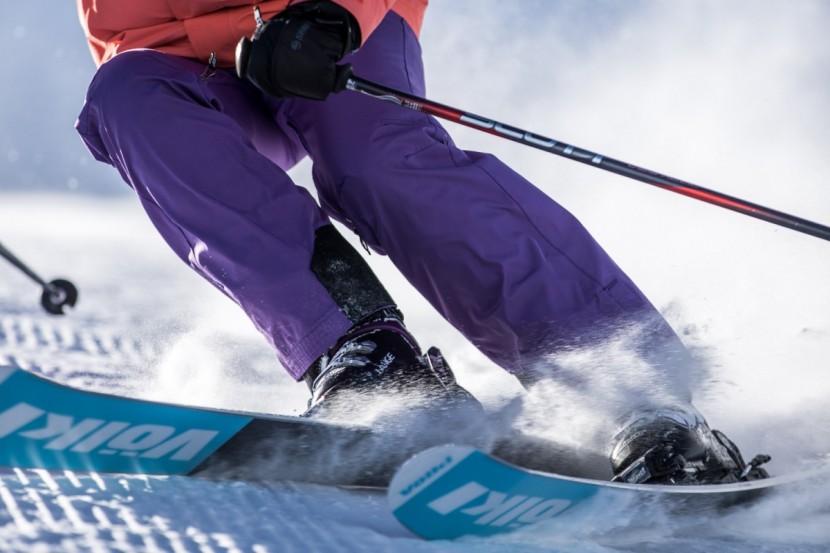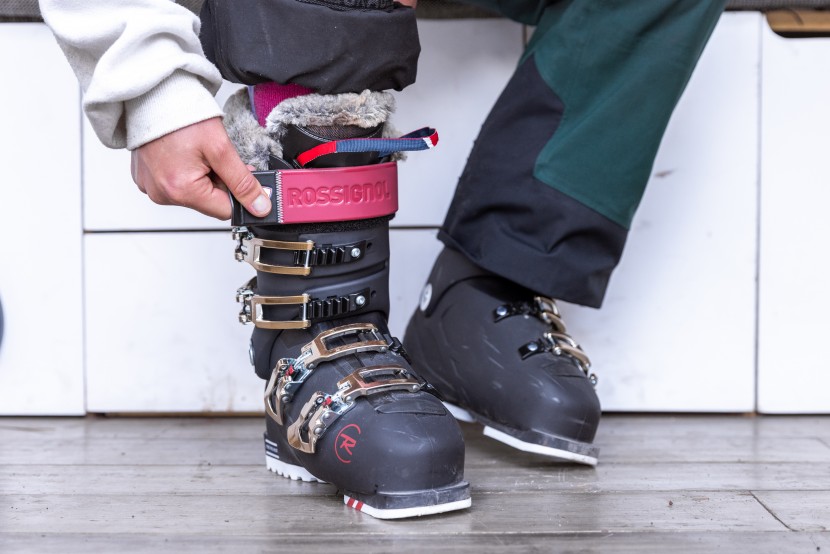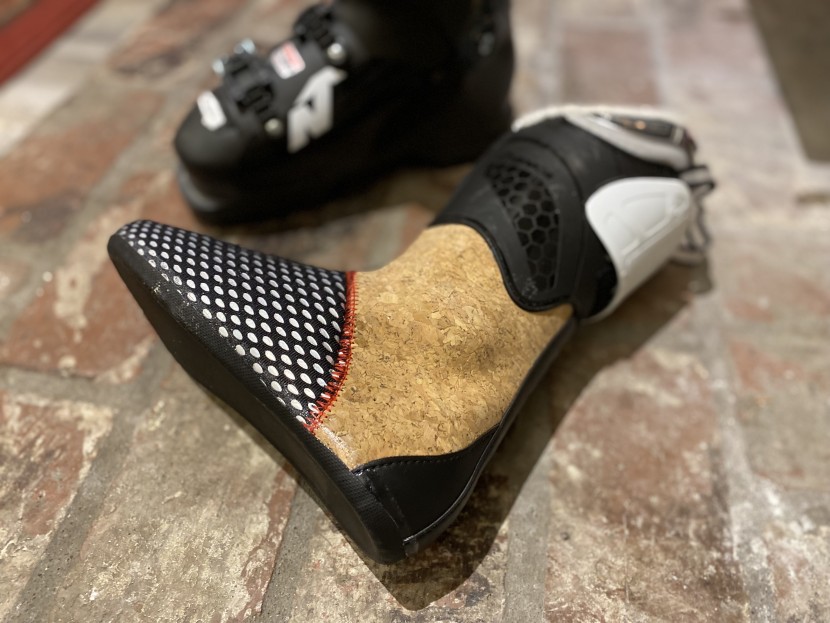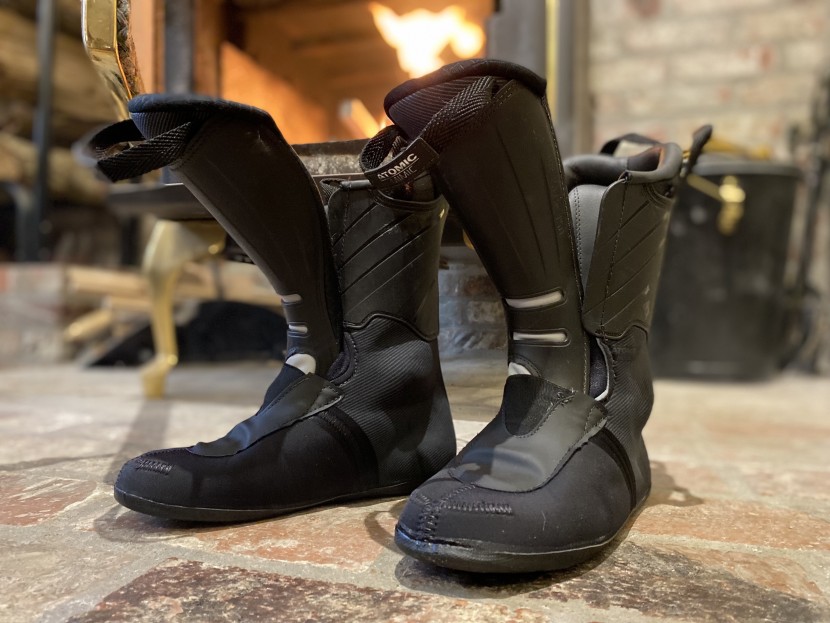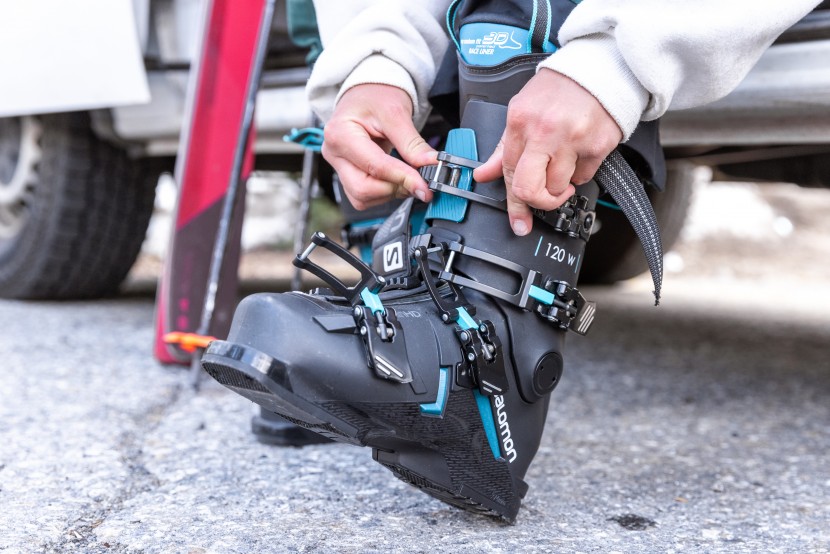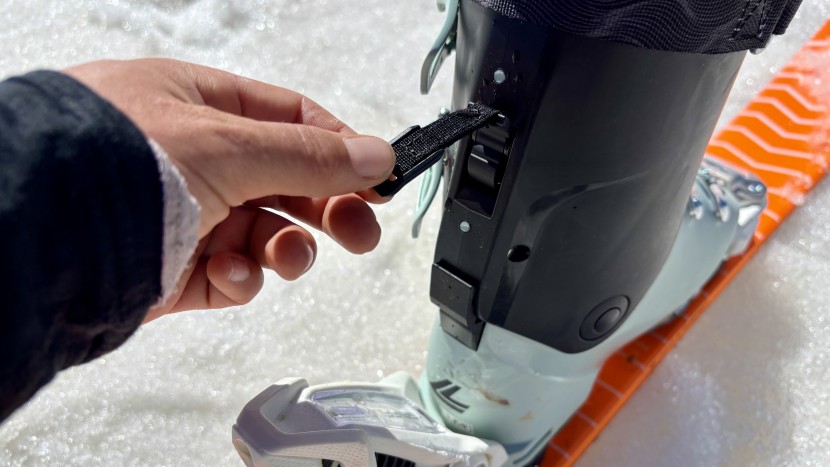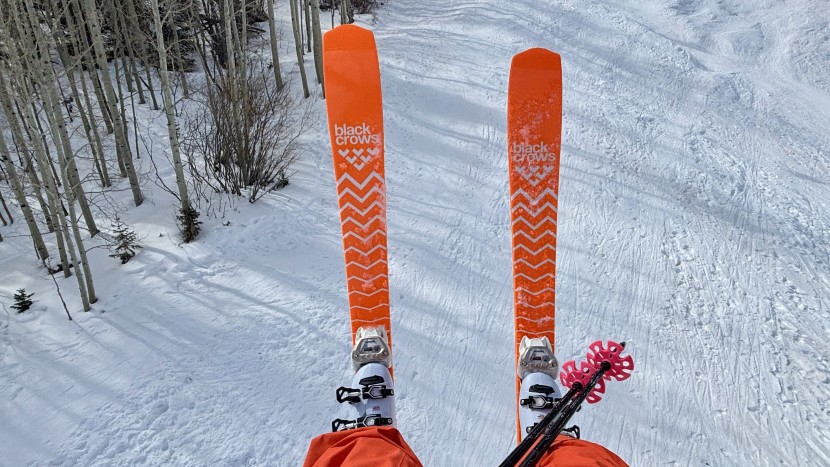Performance
We tested each boot with its listed skier type in mind. For boots in the intermediate to advanced range, we tested in more advanced terrain, at higher speeds, and at a generally higher rate of aggression. For beginner boots, we stuck to more moderate-paced skiing and took it easy on lower-angle blue and green runs to reflect intended use. Every contender was then tested above and below its ideal use using the same parameters.
Related: The Best Ski Boots for Women
We tested every boot beginning with easy runs and gradually moving to expert terrain at high speeds. We also began on-piste and gradually moved off-piste, testing everything from corduroy groomers to slush bumps to fresh powder off of some of the Rockies' most iconic terrain. Each day we skied with various styles, from long GS turns to bunny hops on moguls. Our main goal was to push each boot in the best and worst conditions to analyze the full scope of their performance capabilities. We collected and reviewed the results of each ski day and rated the product on a scale of 1-10 based on its effect on our skiing ability.
We paid close attention to the “responsiveness” and feedback of each boot. Race-style boots and boots with a higher flex are often more responsive than comfort boots with low flexes because of stiffer plastics and a generally closer, tighter fit to the foot. They are built to better receive the vibrations of the snow conditions below your skis. This allows the skier to make more accurate and precise decisions on-piste. A boot that is considered “damp” is less “snappy” and has a slower rebound rate. Essentially, it does not filter energy as quickly from the terrain to your foot.
We also considered power, energy, and rebound when measuring the performance of our test boots. The transfer of power from the skier's leg to the boot ultimately leads us to discuss a boot's energy and its ability to rebound from a flexed position to an upright position. This is best tested on-piste, so we powered through hundreds of groomer laps to assess each boot's ability to snap back and forth. Most boots these days have some form of a progressive flex, which means the boot becomes gradually stiffer as you push into it. This creates that snap-back feeling. The more energetic a boot, the more likely it is to score high in the performance metric. If a boot feels that it moves with you, that's a good thing.
No standardized rating system has been designed to determine a boot's flex, so each brand's internal rating system often determines this number. As such, flex rating is not necessarily uniform and consistent across different brands, so don't write off a boot just because the flex is lower or higher than your initial preference.
We addressed the question of flex related to a boot's downhill performance by repetition and comparison. On the consumer side, the only way to know if a boot feels “true to flex” is by testing a lot of different boots. You could also measure the angle of the ankle region of the boot when being flexed using a goniometer. However, for the average skier, it's more of a feeling than anything. We pushed each boot on and off-piste to determine how flexible or restricted a boot felt and how that affected our ability to ski. We determined the “approachability” of the flex based on the boot's ability to ski well in a variety of terrain and snow conditions.
Last but not least, torsional abilities were one of the testing categories within the performance metric. Think of twisting an empty plastic water bottle. That ability to twist is what we mean by torsional flex. Boots that are predominantly designed for on-piste skiing are going to have limited torsional flex, while boots meant to move in the side-country or boots that are best for bump skiing often have greater torsional flex. They are designed to provide more freedom of lateral movement. We tested for this by skiing across the mountain over various choppy snow conditions to perfect groomers, catching air where we could. Some of the boots wanted us to keep the skis pointed downhill, while others were along for the ride. Overall, we liked the boots with more torsional flex as they were less restrictive.
Comfort & Fit
Testing for comfort is admittedly subjective, so we found it important to focus on out-of-the-box fit, ease of use, and the feel of materials. We acknowledged the rigidity of the boot and how it related to comfort and took note of any presence or absence of pain. Pinch points in the calves, heels, toe boxes, or arch were all felt at some point, so we discussed how that affected our overall impression of the product's level of comfort.
We slipped into each boot day in and day out, hoping to find our glass slipper. Warm days, cold days, you name it. We peeled those layers open and assessed the ease of entry and exit. To measure the walkability of a boot, we parked at the furthest parking area from the ski lift and walked four laps there and back to the car. We repeated this procedure four times per boot during the testing period. This allowed us to obtain a qualitative measurement of the correlation between a boot's rigidity and comfort. Of course, we also considered soles to be a contributing factor, as GripWalk soles are convex and have a smoother rocking surface than an alpine sole.
Liners are a big part of the warmth and comfort assessment. We measured warmth simply by testing the boots in a variety of temperatures and conditions. We stood in puddles to see how cold or wet they might get. We wore them to the weekend apres scene until 6:00 pm. We even spent all of our writing time sitting in the lineup of liners to make sure our feet agreed with their first impressions on snow. We rated the warmth of each boot for every day we skied in them, then took the average score and compared them to one another.
User-friendliness was measured in congruence with “ease of entry and exit” when rating the comfort of a boot. At the beginning of the testing period, we timed how long it took to get each boot on and off. We compared this time along with the ergonomics of the buckle system and shell construction. We had to fumble around with some buckles, while others were very easy to snap together.
Toe Box
Ski boots will most likely cause pain in the outer metatarsals for those with wide or bulbous bones in the big toe or little toe. The term “toe box” literally refers to the boxed area of your toes, which, if you conduct your own research, you may see or hear the anatomic terms “phalanges” and “metatarsals.” If we could freely move or wiggle our toes, we considered this to be a “roomy” toe box. If we felt our toes were scrunched at the end, we considered this a “short” toe box. If we could wiggle toes, but they felt snug and secure, we considered this fit “just right.”
Instep
The instep is the central space in your foot underneath your arch. This is where the custom footbed discussion comes into play. You likely have a high arch or low arch, where low arches are often characterized by the term “flat feet.” We tested each boot with its stock liner, “out of the box,” to get a feeling for the amount of space provided above and below the arch. Nowadays, most boot fitters recommend custom footbeds when fitting customers, thanks to flimsy stock footbeds. Without these, you may experience pain that's derived from a lack of arch support. Due to the custom liners, the instep measurement may be subjective.
For this area, we predominantly commented on roominess or snugness underneath the arch. If there's too much room in the instep, you may experience slipping within the boot or general pain. High arches may experience more pain or pinching from two-piece boots due to pressure from the buckles.
Heel
Ah, the heel. Often forgotten but not to be undervalued. The heel is important to attend to because it is the base and thus the backbone of your foot's ability to drive a boot. It's thin, but it's mighty. When we discuss the fit of the heel region, we use the term “heel pocket.” A properly fit liner has a snug “heel pocket” and doesn't allow your heel to lift out of place. If the heel does not fit, it could greatly affect your performance and overall enjoyment of the boot. Take note that boot fitters can create a heel wedge for those who want to be lifted higher out of the heel pocket. This is almost entirely used when the boot's cuff is too high on the skier's shin.
Ankle
Ankles could be considered the meeting grounds of the foot, where the tibia, fibula, and talus all intersect at the body's strongest and most fragile hinge point. The heel and the ankle go hand in hand. Most pain experienced in the ankle region is from the large ankle bones. We paid particular attention to the fit of the liner and shell in this area. Luckily, most constructions accommodate the standard ankle, but if you experience rubbing in this area, you are likely a candidate for boot “punching.” Most shells are thermo-moldable and can be punched out at the ankles to create more room for large bones.
Calf & Shin
We considered the calf and shin to be a singular unit when it comes to boot fitting. This unit creates more complexities in boot fitting than one would imagine. The cuff profile and cuff height are of most concern when discussing one's calf and shin profile. For shorter women, you may have a shorter shin bone and have difficulty skiing in a boot with a high cuff. Inversely, women with longer legs or longer shins may find shorter cuff heights to lack stiffness and stability. Overall, body mass and leg profile are important considerations when observing a boot's flex rating and cuff height. Luckily, all of the liners we tested are thermo-moldable, and some include removable spoilers in the cuff to add space for larger calves.
Features
Customization is a very important part of the boot-buying process. Going to a boot fitter and shaping a liner and shell is incredibly important in obtaining a perfect fit for a boot. We primarily rated customization by accounting for adjustable features on the ski boot. Moldability was the most important customization criterion, while adjustability, replaceability, and removability of smaller pieces on the boot were also important. For “hybrid” alpine boots, we assessed the design of the tech inserts that make these boots compatible with touring bindings, and the design of the walk mode, with a particular focus on how it affects downhill skiing.
Nowadays, almost all liners are thermo-moldable, meaning heat can be used to shape the liner to your leg's contours. Most plastics are also thermo-moldable, so the shell can be punched or ground to make room for bony or bulbous feet. Replacing worn or stretched pieces can extend the lifetime of the boot. This includes the boot buckles, toe and heel plates (boot soles), power strap, and cuff spoilers. Most boots work with aftermarket liners and customized footbeds, so we did not necessarily consider this in each product's customization rating.
Warmth
Last but not least, we assessed the subjective warmth of each pair of boots. We went out skiing on first chair on subzero days, and assessed how well each pair kept our feet warm and functional. Ultimately, if you can't stay warm and comfortable, none of the other above metrics matter too much if you have to make your way back to the lodge early in the day to rewarm cold toes. Generally, performance fit boots with higher flex and narrower lasts tend to be colder, since they don't allow as good circulation to your feet. Beginner and intermediate boots tend to have both a roomier fit and more features to keep you warm out there, from fleece liners to battery-powered heating elements.



